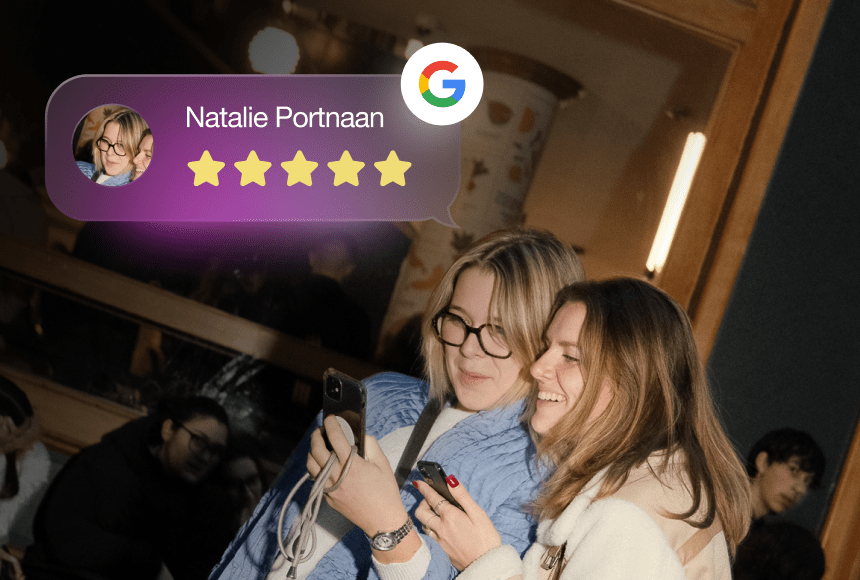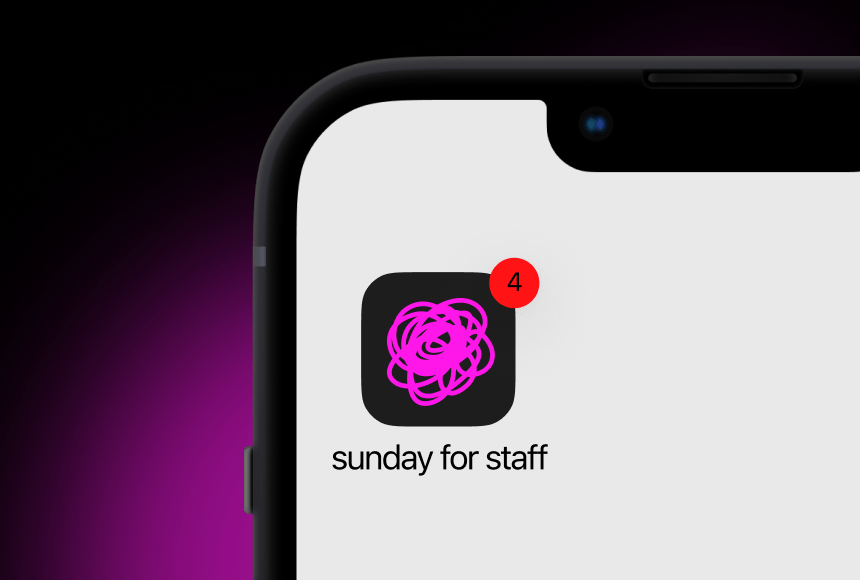
Leverage Customer Feedback to Elevate Team Performance
Why Google Reviews Matter More Than Ever
There was a time when word-of-mouth happened mostly around a neighbourhood pub or a family gathering. Today, online platforms amplify those conversations, making it vital for restaurants to pay attention to what diners are saying. Google Reviews, in particular, have become a powerful metric—one that can directly influence customer perception, local search rankings, and ultimately your bottom line.
According to a recent BrightLocal survey, 87% of consumers read online reviews for local businesses before deciding where to dine. This highlights the sheer importance of online recommendations for any restaurant aiming to stand out in a busy market. More than just a rating or a star count, Google Reviews offer an untapped resource for staff development. By extracting constructive insights from customer feedback, you can tailor training to ensure your team consistently delivers the high-quality service guests expect.
Training your staff with Google Reviews at the centre helps you address real situations—both positive and negative—that occurred in your dining room. By acknowledging and learning from genuine customer experiences, you build a stronger, more equipped team. Let’s explore how you can weave Google Reviews into your broader training strategy and nurture a collaborative learning environment.
Turning Reviews into a Training Roadmap
When it comes to staff training, it’s easy to focus on company manuals or standard lesson plans. But Google Reviews can give you something no manual can: real-time, unfiltered customer impressions. This feedback can reveal key areas of excellence—and areas needing improvement—that you might never spot otherwise. Think of Google Reviews as an interactive guide that points you towards immediate action items. How do you make the most of it?
- Collect feedback regularly: Make it a habit to check for new reviews daily or weekly. The more recent the review, the more relevant it is to your restaurant’s current performance.
- Identify patterns: Are multiple diners pointing out a delay in service at lunchtime? Is there a recurring complaint about portion sizes, or are they praising the warm demeanour of your servers? Patterns highlight the most urgent training needs.
- Separate the signal from the noise: Not all reviews will be constructive. Some might be overly critical or even completely off-topic. Focus on reviews that offer tangible insights you can act on.
Once you have a list of recurring themes—unfriendly greetings, slow service, outstanding dessert presentations—start using this real-life data to craft relevant training modules for your staff. The beauty of these reviews lies in their specificity; they can guide you to address issues more directly, rather than through generic training slides.
Analyzing Positive Reviews for Best Practices
It’s natural to hone in on complaints when reading your Google Reviews. After all, problems signal where action is urgently needed. But don’t skip over the good stuff—positive feedback can be a goldmine for refining and replicating best practices throughout your team. For example, if a review gushes about a particular server’s friendliness, why not ask that server to share their approach with everyone else?
A common scenario might look like this: A review praises your front-of-house staff for their ability to handle large groups flawlessly. Bulletin point? Incorporate group-management techniques into your next training session. If you see repeated mentions of how your staff expertly navigates dietary requirements, consider turning that expertise into a short workshop that ensures every staff member is on the same page.
Highlighting wins has another benefit: boosting team morale. Restaurants can be high-stress environments, and a nod from customers can feel extremely rewarding. Sharing these positive remarks keeps spirits high, motivates ambitious staff, and sets a benchmark for the rest. Celebrate these “best practice” insights, and watch them spread across your entire restaurant team.
Learning from Negative Feedback (Without Pointing Fingers)
Negative reviews often hold the clearest opportunities for improvement. But how do you present that to your staff without demoralising them? The key is to adopt a blame-free culture, focusing on solutions rather than personal failings. If a customer complains that the restaurant was understaffed one evening, it could be an operational issue rather than an individual staff member’s fault. Addressing it fairly ensures people are more open to feedback—and less protective when mistakes are highlighted.
- Hold open discussions: Schedule a quick meeting, referencing the negative review. Instead of asking, “Who messed up?” pose a question like, “How can we prevent this scenario in the future?”
- Stress the learning opportunity: Encourage your staff to see negative feedback as a valuable chance to refine their skills. Reassure them that mistakes aren’t career-ending but can be catalysts for growth.
- Be specific: Closing comments such as “We need to do better” is vague and unhelpful. Zero in on what needs to change: “We need to seat arrivals more quickly during peak times” or “Let’s offer a small gesture—like free breadsticks—if the wait gets long.”
By shifting the conversation to problem-solving, you cultivate a collaborative working culture. Rather than feeling blamed, your staff will feel motivated to improve, using negative reviews as a roadmap to excellence. It’s like turning a slightly overcooked dish into a recipe for success—just add the right ingredients of support and clear communication.
Establishing a Feedback Loop in Your Restaurant
A one-off training session is good, but an ongoing feedback loop is even better. Consider setting aside a short segment during weekly or monthly staff meetings to discuss recent Google Reviews. You might highlight a handful of representative reviews (both positive and negative), and then open the floor for input and brainstorming.
This type of ongoing dialogue ensures that everyone remains aware of customer perceptions and can respond quickly to emerging trends. It also fosters an environment where feedback is normalised, removing the stigma and embarrassment often associated with critical observations. With consistent discussion and action, your staff begins to see Google Reviews not as an external judgement but as a helpful barometer of progress.
What if your restaurant is part of a multi-site group? Then synchronise the insights. If your location in London sees repeated feedback about speed of service, your Liverpool branch might adopt a similar solution, pre-empting the issue before it arises. This cross-learning harnesses the collective wisdom of multiple teams and unites everyone under a common goal: exceptional, consistent service.
Using Tech Tools to Simplify Review Management
Minding multiple review platforms—Google, TripAdvisor, Yelp—can quickly become overwhelming for a busy restaurant manager. However, there are digital solutions that aggregate feedback, making it simpler for you to monitor and manage everything in one place. Once you have a consolidated view, you can focus on understanding the critical points and implementing strategies to address them.
While you might already be physically reading each Google Review, modern technology can help you categorise comments automatically (e.g., “Service” vs. “Food Quality” vs. “Ambience”). This frees up your time so you can focus on actionable solutions for staff training. Additionally, some platforms allow you to respond directly from within their interface, saving the hassle of juggling multiple browser tabs.
This is also where sunday can integrate seamlessly into your workflow. Beyond its core role as a payment solution—letting guests pay with a quick scan of a QR code—sunday can help gently nudge satisfied diners towards leaving Google Reviews. The more reviews you collect, the richer the feedback you’ll have for staff training. In a sense, the mechanism that speeds up payments can also fuel ongoing improvements behind the scenes.
Strategies for Sharing Reviews with Your Team
How you communicate Google Reviews to your staff is as important as the feedback itself. A system that feels too formal or punitive can discourage engagement. A casual approach with no follow-up can lead to complacency. Balance the two, and you’ll create a constructive learning atmosphere.
- Create a staff notice board: If appropriate for your workplace culture, post select Google Reviews (with sensitive details redacted) on a bulletin board in the staff area. Highlight key learning points in bold.
- Leverage small group discussions: Instead of addressing all reviews in a full meeting, occasionally split the team into smaller groups (front-of-house, back-of-house, etc.) to review relevant insights more thoroughly.
- Use role-play scenarios: For service-related complaints, you might ask a few volunteers to role-play a similar situation and demonstrate alternative approaches. Encourage creative problem-solving.
When employees feel they have a voice in how the restaurant evolves, they’re more likely to internalise the lessons from reviews. You’re not just dictating from a manager’s perspective; you’re engaging your staff as equal contributors to the restaurant’s growth.
Case Study: A Fine-Dining Restaurant’s Turnaround
Imagine a fine-dining restaurant in Bristol—let’s call it “The Harbour View.” The Harbour View prided itself on impeccable plating and a high-end menu. However, over a few months, the management noticed a steady stream of Google Reviews rating them four stars or less. Most complaints revolved around wait times and inattentive service, undermining the restaurant’s carefully nurtured reputation.
The owner decided to launch a weekly “Review Huddle.” Each Monday, key members from the front-of-house and kitchen teams reviewed the feedback, reading a short selection of positive and negative comments out loud. They pinpointed a recurring customer frustration: slow refill times for water and a complicated payment process that left diners waiting around when they should have been heading home satisfied.
Slowly and systematically, the restaurant staff implemented changes. They assigned a team member specifically to monitor water glasses at each table throughout peak service, introduced a streamlined approach for taking payments, and used payment solutions like sunday to speed up the final transaction. Over the next two months, the restaurant’s rating rose from 3.8 to 4.5 stars, and the feedback specifically praised the attentive service. Not only did sales rise, but staff members felt more empowered and confident in their roles.
Designing a Tailored Training Programme
By now, you may be wondering what an effective Google Review-centred training programme might look like in practice. Consider this multi-step approach:
- Initial Assessment: Gather and review recent Google feedback from at least three months back. Make a note of recurring themes, whether it’s inconsistent food quality, slow service, or staff attitude.
- Set Goals: Identify specific objectives, such as “Reduce service-related complaints by 50% within three months” or “Achieve an average rating of 4.5 stars within a quarter.”
- Module Creation: Develop training sessions for each identified theme. Keep them short, interactive, and grounded in real-life scenarios encountered in reviews. For instance, host a mock lunch rush based on a real negative review about delayed seating.
- Implementation: Roll out the modules during staff meetings, ensuring employees have a chance to ask questions and share ideas. Encourage open dialogue—you never know who might have a brilliant fix to a common problem.
- Follow-Up: After training, review new Google feedback to see if the implemented solutions are taking effect. If not, adjust and refine the training modules as needed.
This approach transforms your Google Reviews from mere star ratings into a targeted training tool. It helps you monitor evolving customer expectations and adapt your service strategies accordingly.
Encouraging Staff Ownership of Service Quality
For a training approach to gain traction, your team must sense ownership. Authentic engagement flourishes when employees feel they are co-creators, not passive recipients of “yet another training session.” Motivate your staff to read reviews, discuss them, and even respond (where appropriate) to show genuine care. When staff members witness the direct impact of their improvements—like a once-grumpy diner returning with a glowing new review—they build an emotional investment in maintaining high standards.
If you notice that certain employees excel in particular areas—like conflict resolution, table presentation, or efficient order handling—reward them, and use their skills as a framework for training others. This fosters a continuous cycle of peer-to-peer learning, sparing you from the perpetual cycle of re-teaching the basics. The more your team feels an active part in elevating the restaurant’s performance, the more consistently they’ll apply the lessons gleaned from Google Reviews.
Handling Sensitive Feedback Discreetly
Some reviews might touch on delicate issues—like a staff member’s manner, a personal hygiene concern, or other topics that can be uncomfortable to discuss in a public staff meeting. In such cases, handle the conversation privately and respectfully. The objective is not to shame or embarrass anyone but to ensure the feedback is addressed constructively.
It may mean speaking to someone behind closed doors, explaining the concern, and asking for their perspective. Allow them to respond, clarify, and reflect. Often, there is more to the story than what a single review might tell you. Together, you can devise an action plan for improvement. Follow up privately after some time to ensure progress. Respectful one-on-one handling of sensitive topics engenders trust within your team, proving your commitment to professional growth rather than placing blame.
Maintaining Team Morale Through Review Cycles
Nobody wants to feel like they’re constantly under a microscope. Although Google Reviews are accessible to the public, it’s crucial to frame them in a way that encourages growth rather than suspicion. Here are a few tips to keep morale high:
- Balance negatives with positives: If you’re discussing two negative reviews, make sure you present at least one positive testimonial. This prevents your discussion from seeming like a barrage of criticism.
- Keep the tone relaxed: Even if there’s serious work to be done, keep the atmosphere open and supportive. Inject a little culinary humour or anecdote to lighten the mood. Everyone needs a mental palate cleanser from time to time.
- Avoid public blame games: Frame the issues raised as team challenges. Few mistakes truly happen because of one person alone—it’s usually a chain of events. This approach unifies the staff under a common goal of improvement.
When you maintain this balanced perspective, you create an environment where staff members are ready to deal with feedback head-on. The energy remains collaborative, and everyone is able to keep learning without fear of judgement.
Beyond the Star Rating: Mining the Written Comments
Obsessing solely over star averages can be misleading. A four-star rating might mask crucial criticisms that could help you get to five stars. Encourage your staff to read beyond the rating. Focus on the written comments that describe specific experiences: the dish was cold, the server was fantastic, the ambience was too loud, the cappuccino was superb.
These comments become micro learning points. If a customer says, “Our server, Alex, recommended a wine that perfectly complemented our fish,” share that example in your next wine-pairing training session. If someone mentions, “The background music was too loud for conversation,” talk to whoever oversees the in-house playlist or sound levels. Extracting these small, actionable insights from written comments is a quick win to upgrade your guest experience.
Moving Forward with Enhanced Training
Training your staff through Google Reviews isn’t a one-off tactic. It’s an ongoing journey—a bit like perfecting your signature dish. Just as you tweak ingredients to suit your diners’ evolving taste buds, so too should you keep refining your training programmes based on the latest customer feedback. Make Google Reviews a permanent fixture in your operational routine, ensuring a steady flow of insights that inform your service upgrades.
When staff feel supported and valued, they respond by delivering top-notch service. When customers see that their concerns and compliments are taken seriously, they respond by returning—and by leaving more reviews. It’s a cycle of continual progress: reviews lead to better training, better training leads to more satisfied diners, and those diners lead to more positive reviews. In essence, using Google Reviews to train your staff creates a self-sustaining system of growth and excellence for your restaurant.
Frequently Asked Questions (FAQ)
Is there a recommended frequency for reviewing Google feedback with my team?
Many restaurant owners find it helpful to discuss online feedback at least once a week. This can be part of a scheduled staff meeting or a separate quick “Review Huddle.” The key is consistency—regular reviews keep everyone in the loop and ready to adapt quickly.
How can I encourage more customers to leave Google Reviews?
Provide excellent service, of course, but also make leaving a review as simple as possible. Some restaurants place a small card on tables with a QR code linking directly to their Google listing. Others follow up with an automated feedback email after a reservation. Solutions like sunday allow customers to scan a QR to pay swiftly, then nudge them to share a review immediately.
What is the best way to respond to challenging or negative reviews?
Respond promptly, politely, and factually. Apologise for any inconvenience and show genuine interest in resolving the situation. This helps demonstrate accountability to both the reviewer and potential customers reading the exchange. If the matter is sensitive, invite the reviewer to continue the conversation in private.
Can positive reviews help with staff training just as much as negative ones?
Absolutely. Think of positive reviews as a blueprint for best practices. Celebrate the team’s wins and discuss how to replicate those moments across the entire restaurant. Recognising good work encourages staff to continue those high standards while inspiring others to follow suit.
How do I handle feedback that seems inconsistent or contradictory?
Not all customers have the same preferences. Gather multiple data points before making sweeping changes. If you receive contradictory feedback—like one guest saying the music is too loud and another saying it sets the perfect vibe—you might need a flexible approach. Trial adjustments, consult with your team, and watch for emerging trends before finalising any shift in policy.
Find out more today
Drop us your details below and we’ll reach out within the next 24
Stay on top of your online reputation.
Say goodbye to bad ratings and hello to 5*s. Get to know your customers with our integrated rating & review feature, which allows you to get more reviews, better ratings and more visibility online.




